Have you ever experienced an adrenaline rush while mining a solid trophy? When the cord rings from tension, the arms and back are filled with weight from the resistance of the huge fish, and the only thought settles in the brain – I did it all the same! Yes, such an unforgettable experience is possible when catching trophy carp, large pike or humpback perch, but they are most powerful when catching catfish. Well, someone who, and the owner of our rivers will be able to provide worthy resistance to the fisherman.
Catfish hunting is exciting at all stages, because we are dealing not only with a strong, but also a cunning rival. The fisherman must comprehensively study the methods of catfish fishing, painstakingly prepare tackle and bait, choose the optimal time, find the site of the owner of the rivers, attract his attention, be able to overcome and get His mustachioed Majesty out of his native element … Today we will highlight the most important aspects in theory, and you decide whether you have such an enviable trophy by the tackle!
Here is an overview of the content of this tutorial, feel free to jump to any section you care about:
For more fishing instructions, take a look at these popular Trizily links: Best Baitcasting Reels, Best Baitcasting Rods.
- Bottom Fishing For Beginners
- How To Choose Bait For Fishing
- What Do You Need To Start Fishing (Complete Guide)
Where to look for catfish?
Let’s start with the fact that in our water bodies there are mainly two varieties of this representative of the freshwater ichthyofauna. This is the very same giant river catfish, capable of gaining from a centner and more live weight, and its “younger brother”, channel catfish Ictalurus punctatus). It does not grow very large – up to a maximum of ten kilograms, but even with such “modest” conditions it is a coveted trophy for an angler.
The habits of the catfish of these two subspecies differ little, however, the “younger brother” is more thermophilic and lives mainly in artificially stocked waters. However, the habits of these fish are similar, and they catch catfish and catfish in similar ways, differentiating only the working power of the gear.
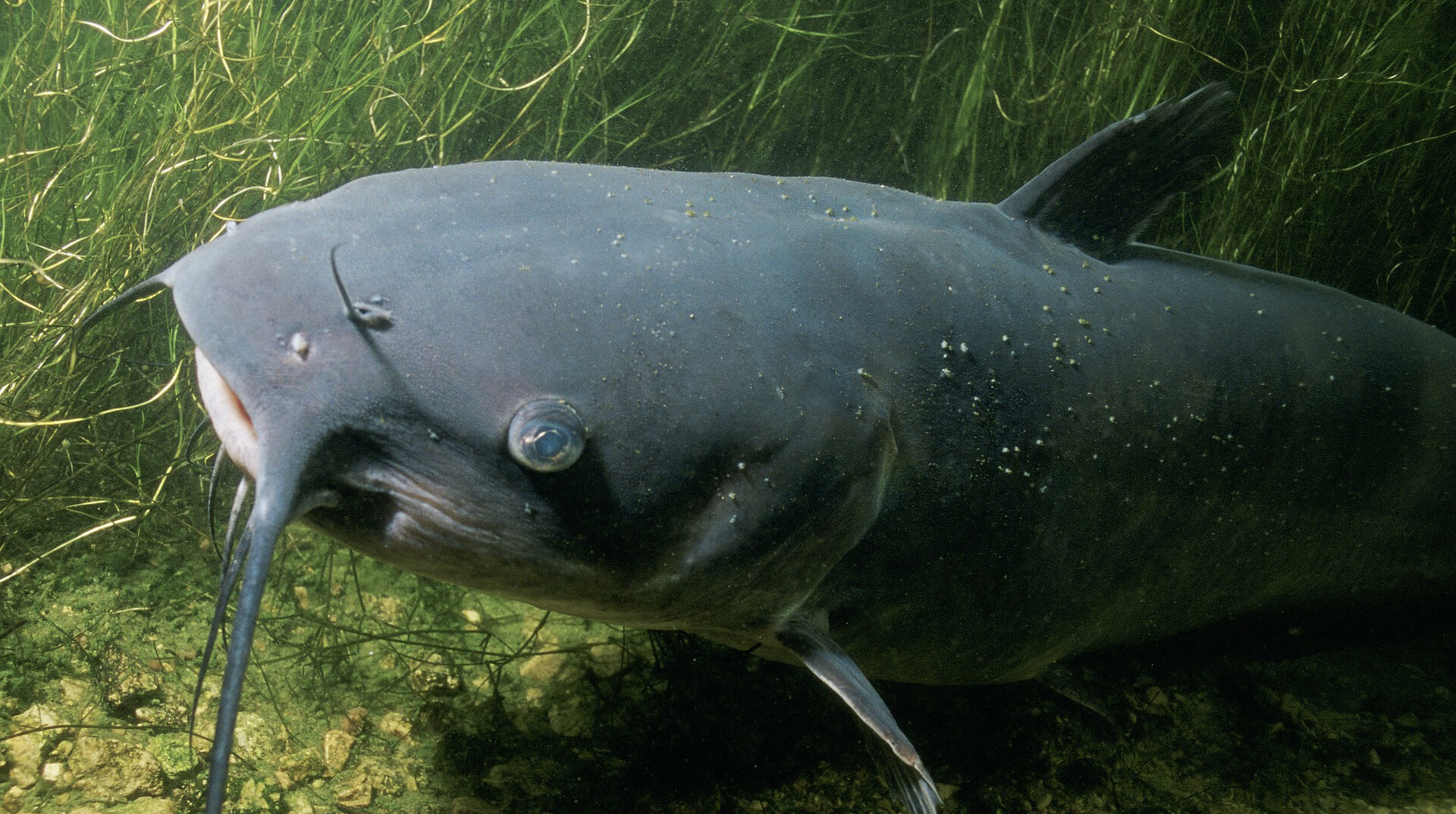
Catfish is a recognized loner of the underwater world: it rarely coexists peacefully with its own kind. For his “apartments” he takes a liking to the deepest parts of a reservoir or river, so it is reasonable to look for him:
- in extended channel depressions and ditches;
- at maximum depth under steep slopes;
- in snags and convicts;
- near hydraulic structures;
- in the whirlpools above which small eddies arise.
Catfish do not like a fast current, so looking for it on flat areas is futile. But he rarely leaves his own “apartment” at depth, except perhaps to the nearest shallow: in the spring – to bask in the sun, in the summer – to feast on small fish at night.
Seasonal fishing features
Catfish have a pronounced seasonal behavior, and this must be taken into account when organizing fishing.
In the spring, the owner of the river awakens from hibernation and swims out of his favorite pits in order to bask in the sun. During this period, catfish are caught mainly on classic carp rods and tackle with a rod of the type of powerful feeders , and the most productive are casts along the boundaries of the shoals. You can use for these purposes and heavy casting spinning rods in an alliance with jig lures or deep-sea wobblers.
In May, this fish goes to spawn, and, unlike most brethren, it guards the clutch for some time. During this period, catching it in most regions is strictly prohibited. There are no exceptions in terms of gear.
After spawning, the catfish rests for some time, but by mid-June it acquires some activity – the summer appetite sets in. In summer, the owner of the rivers is hunted using the above “spring” methods, and the period of active fishing is postponed to the dark, when the catfish goes hunting. Fishing with the use of watercraft is also becoming effective: trolling , setting up stationary anchored circles, and also the most authentic way of catching catfish is wobbling.
In autumn, the owner of reservoirs becomes especially unpredictable: he is sensitive to temperature changes and prepares for winter lethargy. Sometimes he goes hunting during the day, sometimes at night, reacts poorly to food. At this time, spinning in all its forms comes to the fore: jig with heavy heads, twitching at considerable depths when using large wobblers , “lane” from a rowing boat, sometimes trolling. The main task is to deliver the delicacy literally under the nose of the catfish: during this period, even the parameters of the distance are critical.
In winter, the catfish is in blissful peace, so the hunt for it has to be postponed until spring.
Lure selection
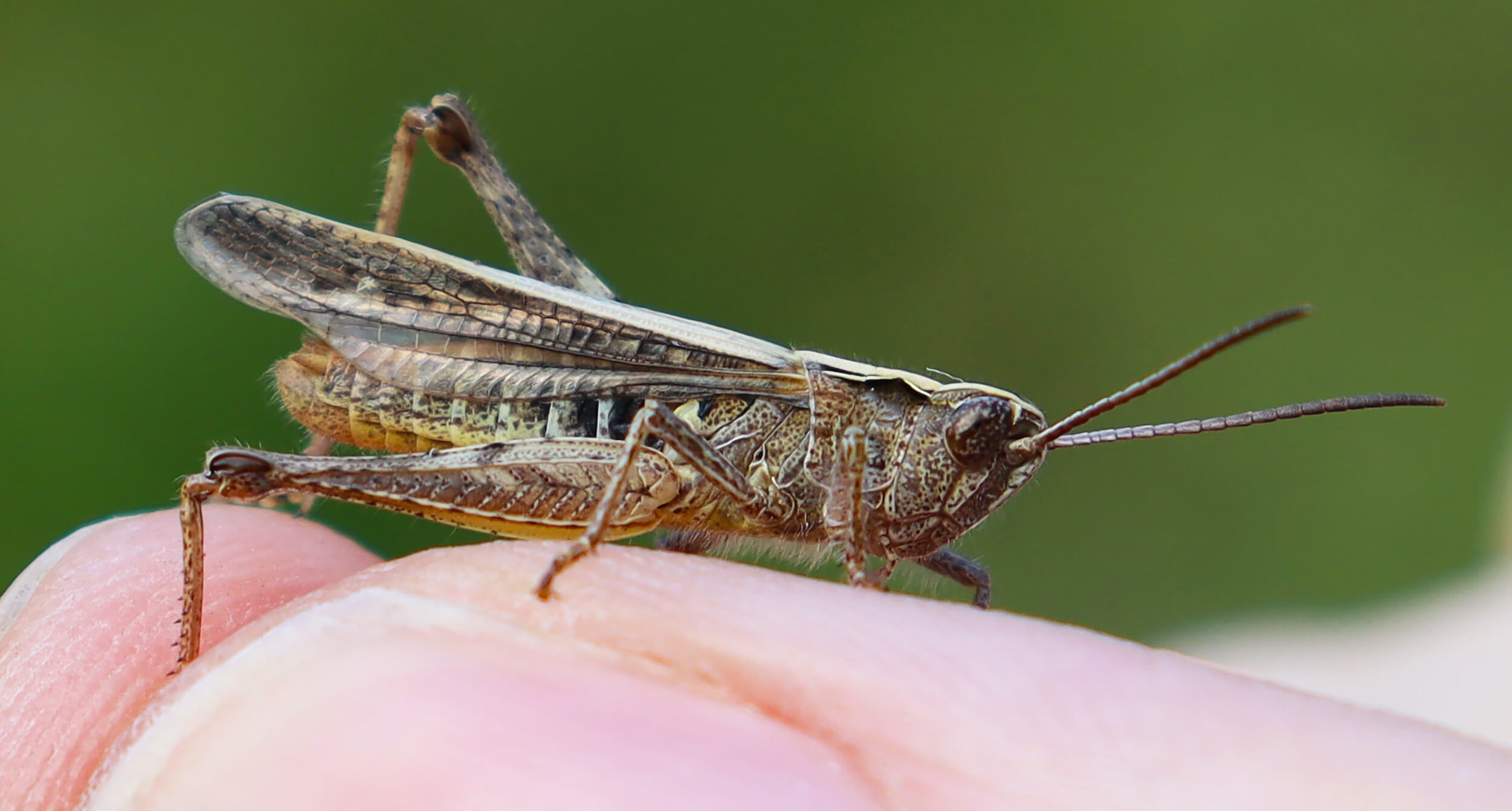
When choosing a bait, you should take into account the food preferences of the giant – it is extremely carnivorous. This means that when hunting for it, you should use baits of animal origin or artificial baits that imitate them. Naturally, the season and fishing method are taken into account.
Most often when catching catfish they use:
- Live active tips . In this case, we are talking mainly about all kinds of live fish, and often large: the river giant is unlikely to be tempted by a crucian less than 200 grams in weight. Alternatively, there are frogs and tailed frogs, which catfish consume with appetite in the summer.
- Passive live bait . This category includes meat and fish cutting (preferably with a “smell”), offal, crayfish, molluscs, bunches of worms crawling out, large insects such as locusts, beetles or beetles.
- Artificial baits . The most effective deep wobblers of large sizes (from 12 cm), solid silicone lures, “spinners” (for trolling), “vibrators”, silicones in tandem with heavy jig heads. It is clear that all these lures require the use of powerful spinning rods. Casting and trolling forms are preferred.
Effective gear and techniques
Catfish is a difficult predator to prey, so you have to invent new tackle and methods of catching it. But doesn’t this increase the level of adrenaline in the blood?
At the moment, large catfish are usually caught on:
- Bottom gear . Both rod and classic tackle are used, with the exception of the “rubber band”. Even the most durable “model” will not withstand the pressure of the river giant.
- Float equipment . Not the most common option when applied to a river giant. However, in some cases, the use of a fishing rod is quite justified (for example, if the catfish has settled in a hollow between the roots).
- Spinning . Here we mean spinning in the broad sense of the word: jig with silicone lures , deep twitching on heavy cranks and minnows, atypical use of lures and wires, trolling, “trolling” and so on.
- Zherlitsa . Catfish can also be obtained for primitive supplies, but more often for these purposes large circles are used, anchored and characterized by powerful equipment.
- Kwok . This is not a special tackle, but a device that makes catfish hunting as exciting and effective as possible. No other fish is caught in this way!
And now let’s talk in more detail about each method of catching the river giant.
Bottom gear
The most effective is passive bottom fishing for catfish during those periods when it is most active, that is, in spring and summer appetite. You can use the classic cord-based bottom rod , fixed on the shore and firmly anchored at depth. At the same time, the number of leashes should not be abused: if there is a hunt for the owner of the river, there should be no more than two or three of them. It is better to fasten the carp rod to a tree – even the most powerful fish will not vomit it. The hammered pegs can go swimming with the catfish. Primitive bells are good as signaling devices.
The most primitive equipment can be used:
- We wind about 100 m of braided cord or nylon cord with a diameter of 0.6-1 mm on a wooden reel.
- We attach a sinker weighing from 20 to 200 grams to the base (sometimes even more, especially if fishing is carried out on a large live bait).
- On the main cord we impose thinner leashes up to 1 meter long (possible in knots, but better through carabiners and swivels) with a large live tee or single leashes no less than No. 8-10.
Bottom fishing rods are best set at night, along the shoals, where the owner of the river sometimes goes to fatten. To cover a vast water area, it is better to install 3-4 tackles in a fan from the coast, equipping them with live bait, pieces of meat, frogs, pearl barley, and so on. The distance between the attachment points is at least 5 meters to avoid tangling.
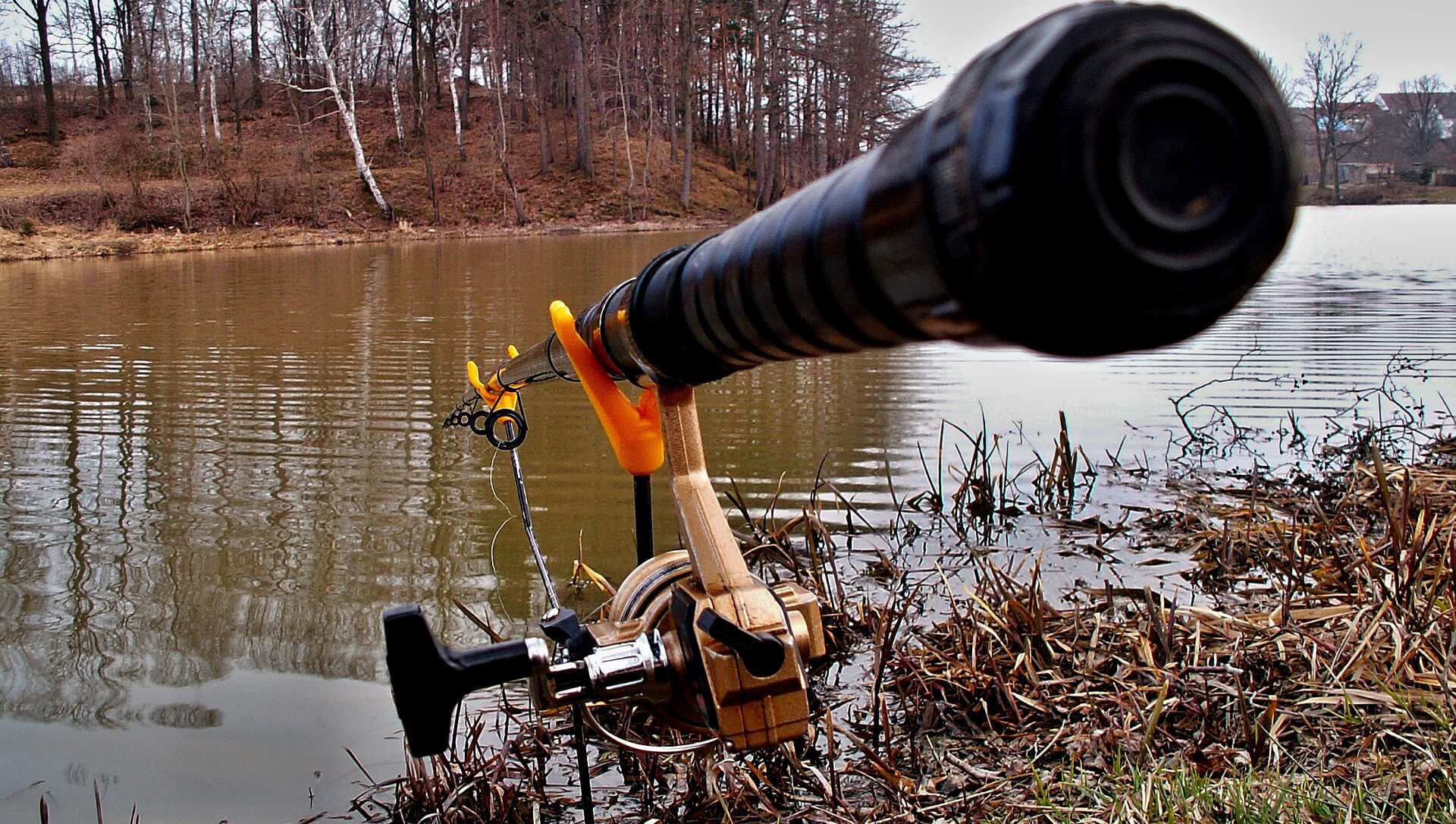
Alternatively, a tackle with a rod can be used , which greatly facilitates casting, hooking and playing large fish. When purposefully fishing for large catfish, it is reasonable to use carp feeders, powerful crocodile spinning rods and trolling blanks – a cheap fiberglass rod simply cannot withstand the giant’s pressure. A prerequisite is the presence of a very strong reel with a freespin reel.
The rig includes monofilament with a diameter of up to 1 mm (it dampens the jerks of powerful fish) or braid up to 0.8 mm. The lead is usually 0.1-0.2 mm thinner than the main line. On the main cord there is a sinker weighing up to 150 grams (you can use a traditional olive), and a leash with a hook (double, tee or single No. 6-10) is attached to it with a carabiner through a swivel. The length of the leash varies depending on the fishing conditions, but the most versatile option is about half a meter. Sometimes the rig is supplemented with a special float, which in this case does not play the role of a signaling device, but raises the bait above the bottom, making it more seductive.
Castings are carried out sighting, near the place of the alleged dislocation of the catfish. When fishing at night, bite signaling sounds are especially relevant.
Float rod
The float rig is not a typical option for catching catfish of more or less decent sizes, but young individuals sometimes come across it. Moreover, the fishing rod can be equipped for completely different purposes. The main thing in such “unexpected” – with weak equipment to be able to bring the catfish ashore. As a rule, the mustachioed leaves with a leash and part of the rig, but especially skilled anglers sometimes win this fight.
But sometimes the live bait float rod is purposefully equipped to catch the river giant. This is quite a worthy option for plumb fishing on the steep slope, directly above the pit where the catfish settled. However, it should be borne in mind that in this case, problems with playing are inevitable. On a small river, casting is carried out from the opposite bank, which reduces the load on the rig when playing.
In this case, it is strongly recommended to use powerful carp sticks and spinning rods with the highest possible test, equipped with high-strength fishing lines. You can use high-quality monofilament of large cross-section, about 0.5 mm: it absorbs jerks of large fish, reducing the load on the blank. You can supplement it with a soft piece of braid. If the catfish is caught with live bait, high-strength “tees” are used, for other baits, for example, bundles of worms and spindles, you can also use single-cords of the largest numbers.
The float is selected depending on the weight of the bait and fishing conditions. At depths of up to 2.5 m, blind rigging is quite effective, but if hunting is carried out at lower horizons, it is rational to change it to sliding one.
Fishing from a boat is most productive. To begin with, you can anchor, make a few casts, and then slowly raft down the river. It is extremely rare to “hatch” a catfish from the shore: it is more effective to move the fisherman along the shore after the float floating downstream.
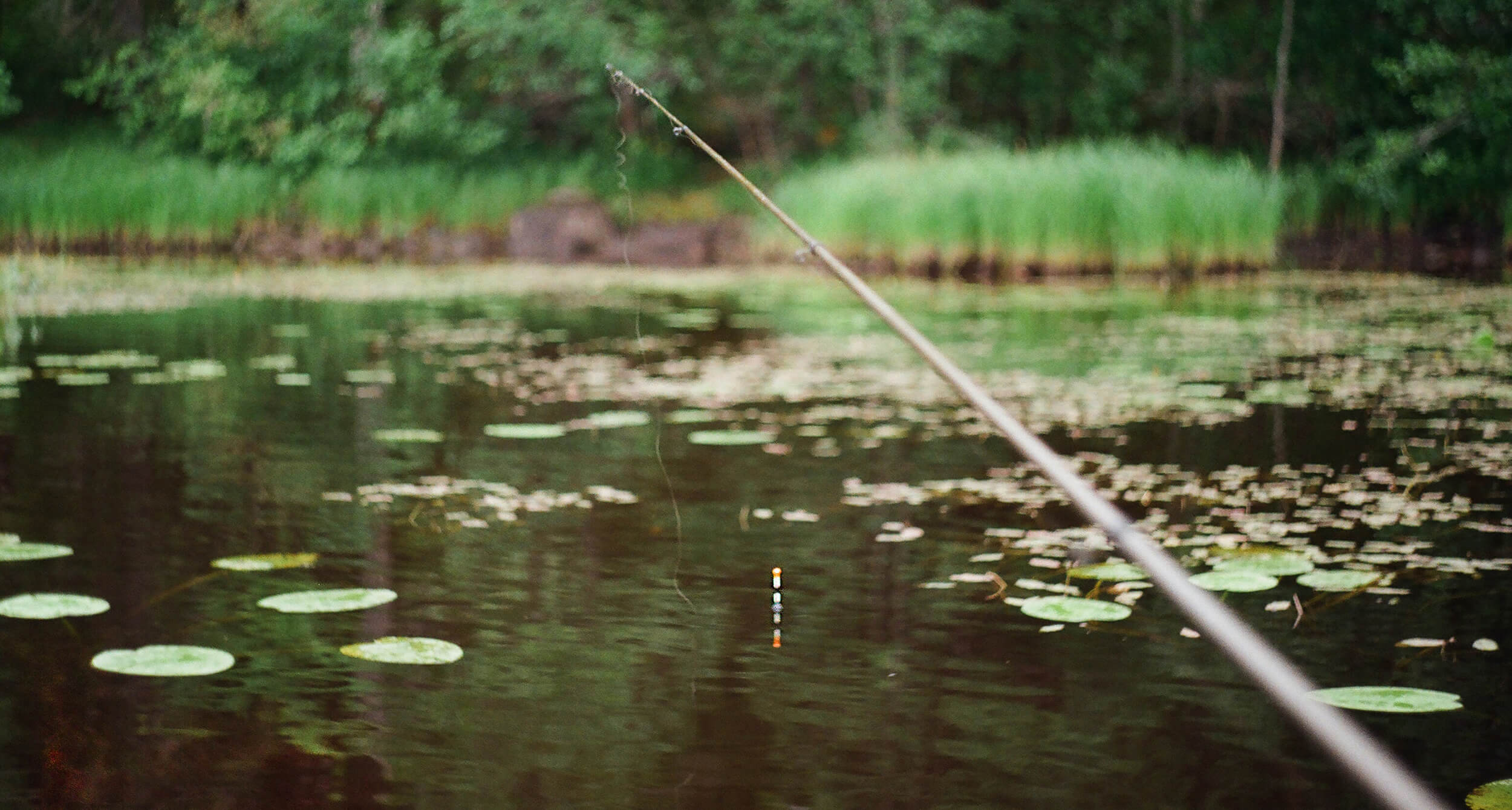
Spinning
It is better to purposefully catch catfish using casting equipment rather than spinning equipment. In principle, they are very similar, but there are nuances. A heavy casting form is tailored specifically for trophy fishing and catching large specimens. The rod handle is equipped with a special protrusion that improves grip – anglers call it a trigger. The guide rings are maximally reinforced and are directed downwards in working condition. In the classic version, the casting blank is equipped with a baitcasting reel.
In the absence of a casting rod, a high-quality heavy spinning rod with a reel equipped with a friction brake and a freespin reel is also suitable. The optimal length of the blank is 2.7 m. As the main line, monofilament is applicable, which dampens the activity of fish, but its extensibility plays a negative role in jigging – in such cases it is better to replace it with braid.
For fishing in a snag it is best to use all kinds of large silicone lures of dark shades with heavy jig heads and a non-snag mounting. With a relatively clear bottom, deep-sea wobblers such as extremely large minnows and jerk baits with classic twitching are good . An alternative can be a heavy “oscillator”, capable of maintaining a stable depth during the drive. When fishing, maximum attention should be paid to dumps along the deepening of the channel, areas near whirlpools and pits.
An interesting way of catching a river giant can be trolling with a spinning spoon or a wobbler with a frame – so you can quickly explore vast water areas, including “rolling” the bait along the river bed in the hope that the mustachioed will decide to attack. If you have only a non-motorized watercraft, you can use it to catch catfish in traditional ways (jig, twitching). Alternatively, we can use a trolling prototype – “track”.
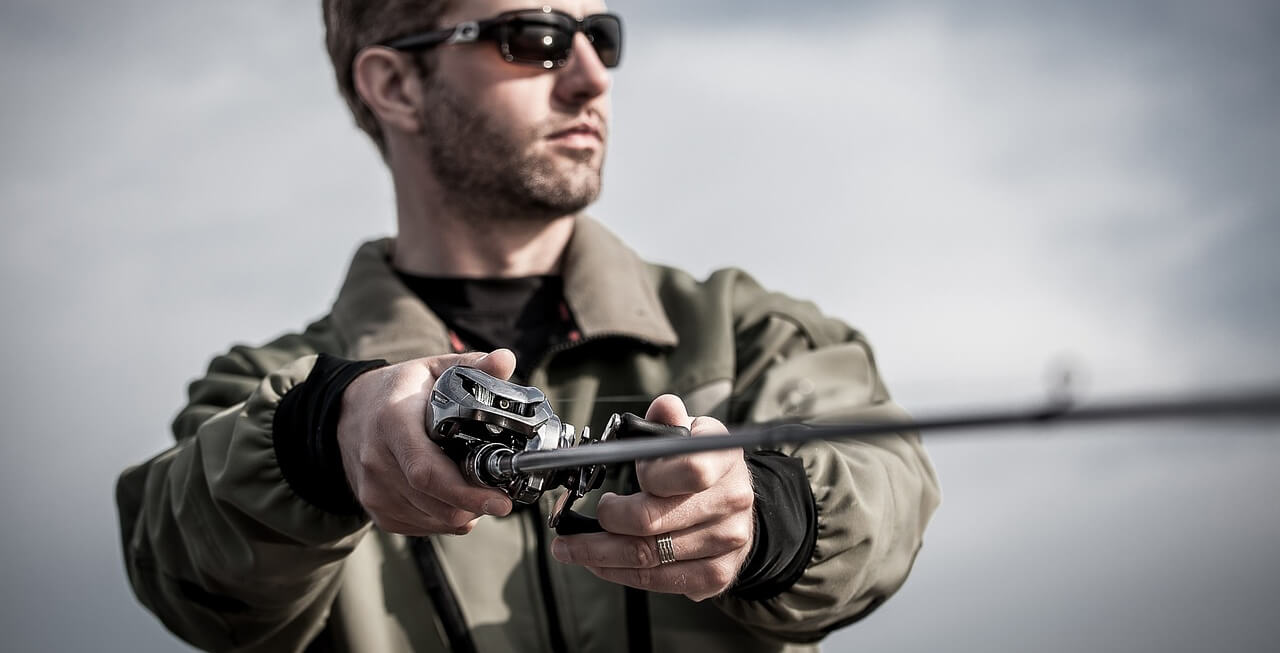
Zherlitsa
Zherlitsa in all forms is one of the time-tested methods of catching catfish. In this case, supplies were historically used – the simplest live bait tackle with attachment on poles. The pole is installed near the catfish pit, a flyer with rigging is hung on it. It is best to use a braided cord as the main line; a metal leash equipped with the largest hook possible will also be useful. If possible, it is better to attach the tackle to a coastal tree – it is problematic to fix the pole rigidly, especially in soft bottom soil.
An improved version of the classic supply are the vents, equipped with inertial reels and signaling devices in the form of flags. The main thing is to install them in a place where there really is a catfish, and watch the signaling devices. However, the catfish sometimes successfully self-hooks and waits for the angler.
Catfish are effectively caught on floating zherlitsa, in common parlance referred to as “circles”. Moreover, rafting is practiced extremely rarely: more often, anchored circles for the night are installed near the places of the hypothetical stay of the catfish.
Gnats of all kinds need powerful rigging, and a live bait or a frog is usually placed on the hook through the back. With passive bait (a garland of pearls, a piece of meat, offal, squid), you can arouse the predator’s interest in a clever way – to tie a bunch of red threads attractively fluttering in the water to the hook.
Wandering
So we come to the apogee of fishing invention – quitting. This method of fishing is used exclusively for catfish – predators of other species are not hunted in this way. Why the owner of the river is attracted by the strange sounds of kwok is still not clear, but this does not interfere with the productivity of fishing.
Kwok is an accessory for creating special acoustic effects. Usually it is a flat wooden instrument with a curved shape, equipped with a handle and a characteristic flat patch at the opposite end (hoof). Craftsmen make quoks with their own hands, often using ordinary household knives for this. When the “hoof” strikes the water, a characteristic sound, “kwok”, is heard, hence the name of this fishing method.
Summer is considered the most productive for wandering – it is then that the mustachioed owner of the river becomes especially susceptible to characteristic sounds. They usually go fishing in the morning or evening dawn, and sometimes at night. Wandering is carried out from the boat at certain time intervals. As the main tackle, a primitive zakidushka is used, which is hung from the side of the floating craft. It consists of a wooden reel, on which a braided cord is wound with a sliding olive weight and a powerful hook with a sting bent inside. The weight of the load depends on the strength of the current and can approach three hundred grams.
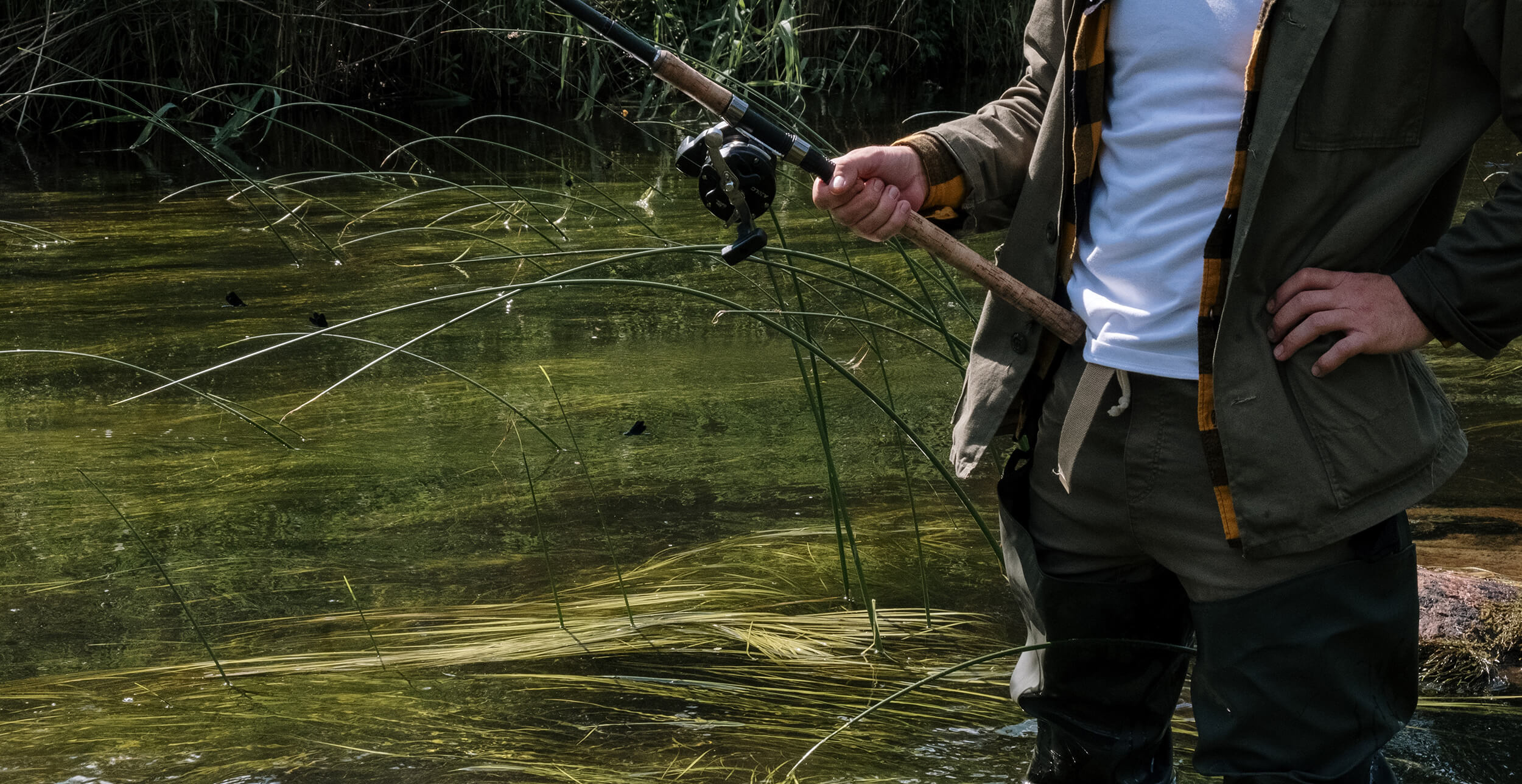
For the convenience of catching and playing large catfish, you can improve the equipment. To do this, it is good to use a powerful rod up to two meters long with reinforced guide guides – spinning, casting, feeder, and so on. An ideal multiplier, but a digestible and inertialess one with a reliable friction clutch.
The bait of animal origin can be both active (live bait, frog, lamprey) and inert (pearl barley, toothless, bunches of worms and leeches, offal and meat trimmings).
Features of playing
A catfish bite is usually transmitted by a powerful push followed by a pause. During this pause, the predator stops in order to taste the bait and may well spit it out, feeling that something was wrong. The sweep should follow the resumption of the trophy’s activity, when the barbel decides to move towards the chosen pit.
You need to hook the catfish hard, but not too sharply: and so an enormous load falls on the rig. Do not forget that a trophy specimen is capable not only of tearing the rig, breaking a rod or damaging a floating craft, but also seriously crippling an unlucky catfish. This means that catching a large catfish without any auxiliary means is not only hopeless, but also dangerous. A regular landing net will not work here – a large specimen simply will not fit in it. A hook, a towing cord with a powerful hook (when fishing from a boat) and a protective glove are very useful.
The first rule is that you should never wrap the cord around your hand: it’s better to just hold it in your palm. If you can seize the moment, wear a protective glove. The cord must be periodically released at the maximum load, let the catfish move back a little and resume winding again when the clutch stops working. It is good if you can periodically raise the barbel’s head above the water so that it swallows air. These manipulations can be performed manually, sensitively reacting to the activity of the fish. This technique is called “pumping out”.
Exhausted by a stubborn struggle, the catfish begins to blow bubbles. This signals the possibility of forcing the tightening. The weary owner of the river is pulled to the bank or side of the boat and lifted with the help of a hook with a hook under the gills. In the absence of a hook, you can grab the caught catfish by the lower jaw with a hand, always protected by a glove.
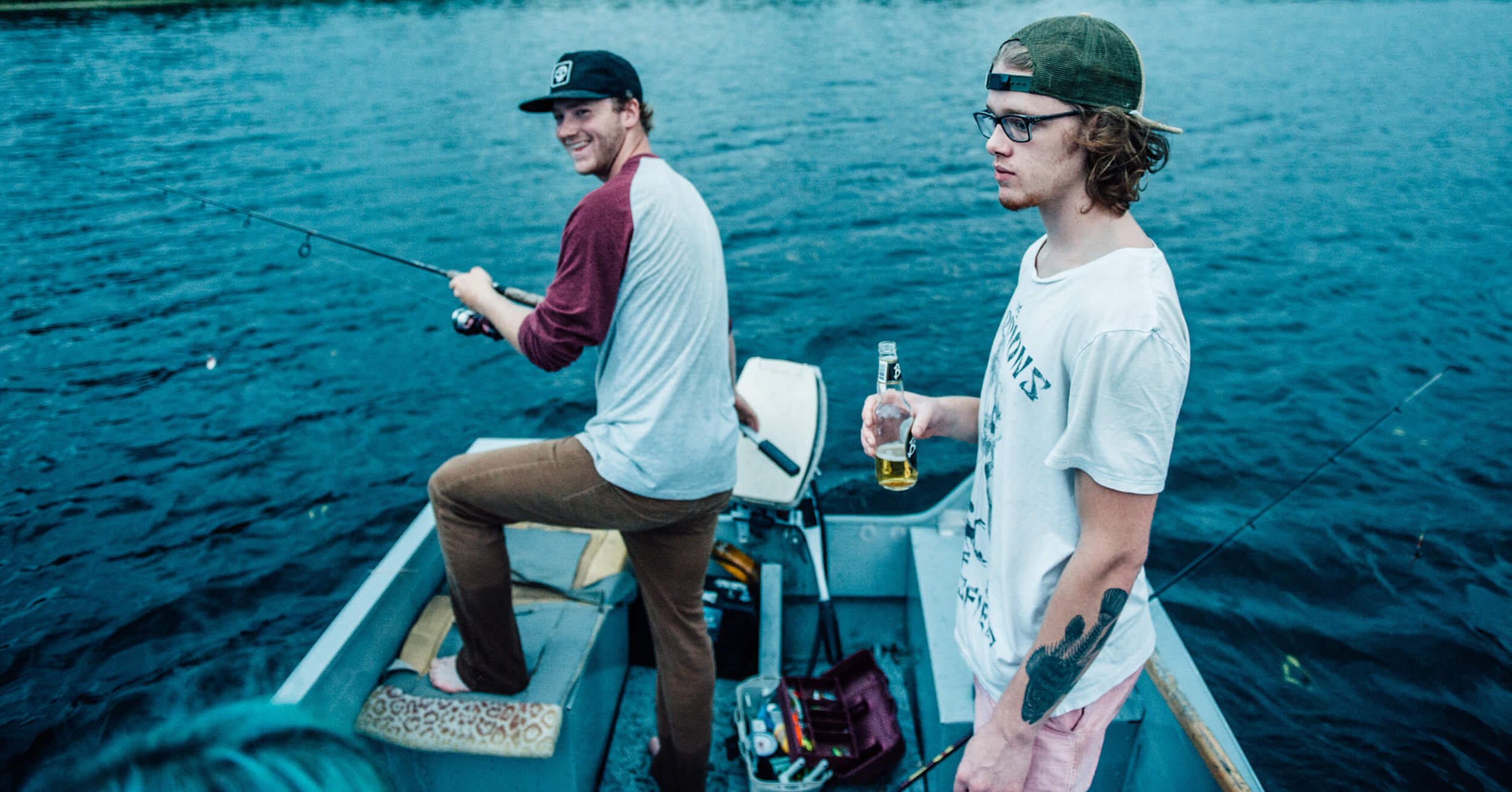
Tips from experienced anglers
At the end of this publication, we propose to listen to the recommendations of anglers with experience:
- The main thing is to find a barbel. The main thing in catfish fishing is to correctly determine the location of the barbel, and this is impossible without studying the bottom relief. In this regard, do not stint on the purchase of an echo sounder. You can spot anomaly points using a GPS navigator, and then proceed to their systematic search.
- Don’t skimp on accessories. Get the highest quality crochet hooks. You can take models designed for sea fishing: they are expensive, but as strong as possible and not subject to corrosion. The best quality and most reliable should be swivels, carbines, leashes – in short, all the elements of the equipment.
- Prepare yourself thoroughly for fishing. In this case, you are going for a serious fishing session that requires thorough preparation. Check the tackle, craft, prepare several types of bait, study the behavior and food preferences of catfish in this pond, take care of your own outfit and be patient.
- Know how to switch. The owner of the rivers has a capricious and unpredictable character. Therefore, if catching catfish for some reason did not work, you can switch to a simpler predator, so you should have a more delicate rig in your arsenal.
- Take care of the future. Catfish in our reservoirs are becoming less and less – this fish is extremely suffering from environmental degradation and predatory poaching. Use approved tackle and observe the conditions of the spawning prohibition, because, despite the formidable appearance, the owner of the rivers is very vulnerable.
Have we already infected you with the catfish fishing virus? We hope that this “disease” will benefit you, bring you solid trophies and an abyss of adrenaline!

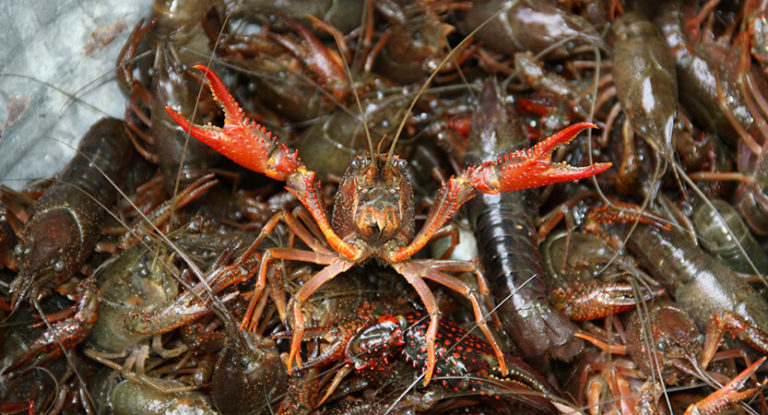
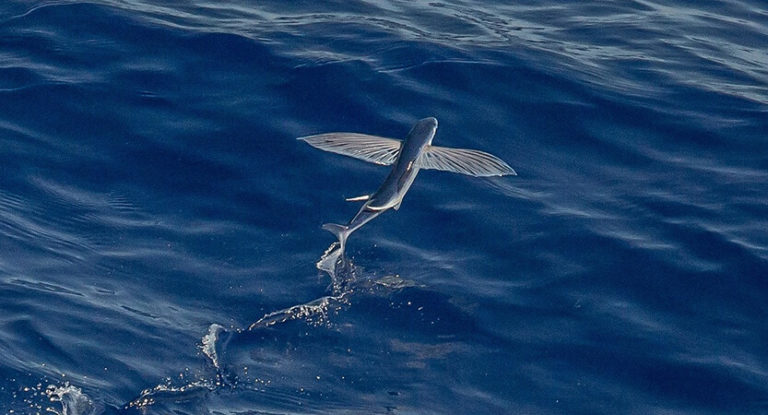
![Top 10 Best Fishing Watches Reviewed [Buyers Guide] 10 Top 10 Best Fishing Watches Reviewed [Buyers Guide]](https://trizily.com/wp-content/uploads/2022/03/best-fishing-watches-768x768.jpg)
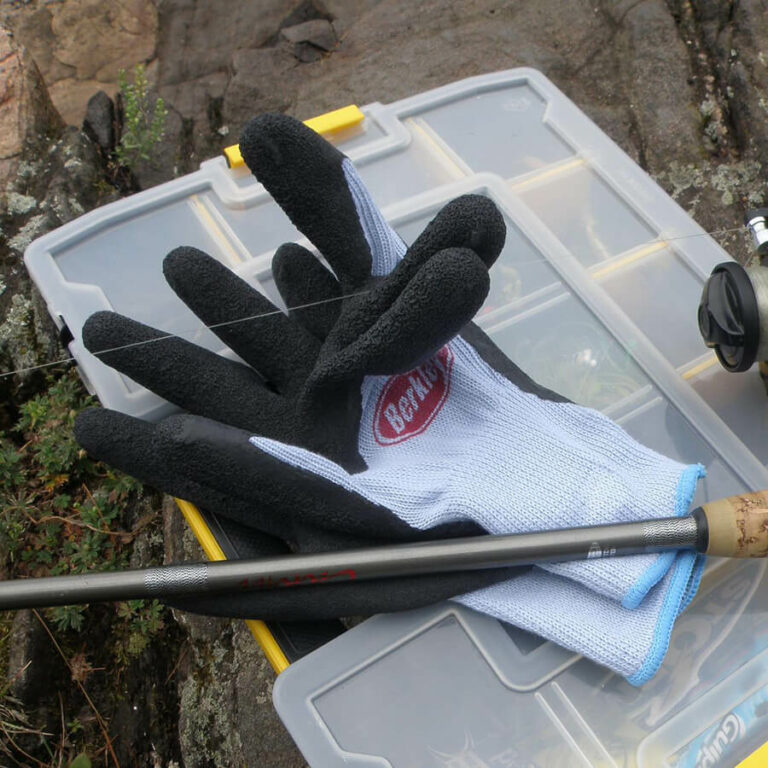
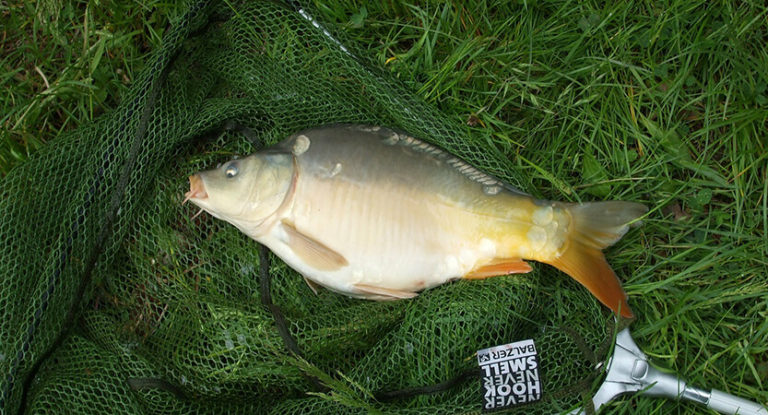
![Top 10 Best Fishing Multi Tools [Reviews & Buyers guide] 33 Top 10 Best Fishing Multi Tools [Reviews & Buyers guide]](https://trizily.com/wp-content/uploads/2022/03/best-fishing-multi-tools-768x768.jpg)